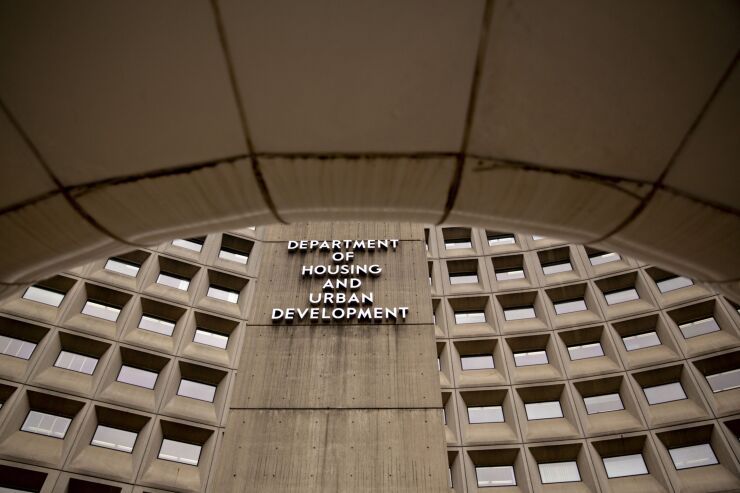In Ann Arbor, Michigan, at the intersection of Maple and Pauline, they are building an apartment complex that will have about 400 bedrooms. It was originally proposed as condominiums but changed to apartments after the site plan was approved. This is not an isolated instance. All the many tall buildings that have been built downtown in Ann Arbor over the past two decades are apartments, because they were built using Department of Housing and Urban Development multifamily loan programs.
Why did this 400-unit project switch from for-sale condos to rental apartments? Probably because the funding for condos is very hard to come by but the funding for apartments is very easy to obtain. Why? Most of these loans are backed by HUD loan guarantees. HUD will back apartment loans, but not condo construction or condo permanent financing loans for projects with more than four units. A developer can obtain a loan from HUD up to 90% of the “as built” appraised value of the project. Condo loans come from banks, and banks will lend up to 70% of the “as built” appraised value of the project. An investor needs to put triple the investment into a condo project versus an apartment project and gets one-third the return on investment relative to the dollars invested.
The bigger-picture problem is that rental apartments don’t allow the building of intergenerational wealth. Only condos and homes do. Our nation has invested significant sums over the past 90 years promoting affordable homeownership for working-class Americans, which helped many families climb the economic ladder and helped create a large and vibrant middle class in our country. However, due to historic discrimination, many minorities did not benefit from these programs, and the current focus of federal government housing programs is on building for-rent apartments and not for-sale housing. As a direct result, the median household wealth of white families is over $100,000. The median household wealth of Black families is under $5,000.
To create a more inclusive society, this needs to change.
The problems, and potential solutions, on the local level, can be seen in the stories of Mayor Al Wheeler and John Barfield. Wheeler, the University of Michigan’s first tenured Black professor, reportedly faced discrimination at work and in his personal life, which moved him to become a civil rights activist. An eminent scientist, Wheeler was unable to secure a mortgage from a local bank when he and his wife wanted to buy an Ann Arbor home in 1945. Thirty-two years later Al Wheeler was elected the mayor of Ann Arbor, albeit by a margin of just one vote. His daughter, Alma Wheeler Smith, who served as our state representative and state senator, is currently the chair of the board of directors of the bank where I am CEO.

When I moved to Ann Arbor 28 years ago, I heard about John Barfield and decided to seek out this remarkable man to get his take on what unmet banking needs there might be in the Ann Arbor area. Barfield was a sharecropper’s son who worked his way up from a janitorial job at the University of Michigan to starting his own cleaning business, eventually becoming a billionaire. He very graciously met with me. During our interview he told me a fascinating story about ongoing redlining by banks in Ypsilanti, the next town east of Ann Arbor, and how he had been the first member of the Black community in Ypsilanti to get a mortgage to buy a home, in the early 1960s.
If you want to understand why Ypsilanti is economically depressed compared to Ann Arbor, you need not look past this point. Because the banks were not lending to the Black community on the south side of Ypsilanti, home prices were artificially depressed and a large portion of the citizens of the city could not become homeowners. If one cannot become a homeowner and is a renter all one’s life, a person cannot build equity in a home, which is the cornerstone of the wealth of America’s middle class. When I arrived in town in 1995 one could buy a nice home on the south side of Ypsilanti for $40,000. Even today, Ypsilanti has more home renters than homeowners.
As a result of meeting with Mr. Barfield and hearing this story I made two decisions. First, I offered John a seat on our bank board, which he graciously declined, saying that he was retiring soon and didn't want to take on new business challenges. Secondly, I resolved to use our bank to destroy the redlining still occurring then in Ypsilanti, which after great effort we were successful in doing. Despite these local successes, much remains undone.
Today, government money is flooding into the housing market. However, virtually all of these funds are targeted at building more apartments, not promoting homeownership. HUD’s programs are warping the market supply. This problem could be fixed if Congress would fund the HUD 234d Multifamily loan program (the only HUD program that could be used to build condos for sale with five or more units), which is on the books but has not been funded by Congress in decades. Only Congress can fix this problem for us. If we want to do something practical, we should all call on our lawmakers to fix this. I have repeatedly done so myself both in writing and in person.





